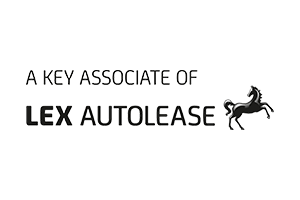We’ve been in business for over 18 years now so it’s safe to say that when it comes to leasing we’ve seen nearly every circumstance that can happen, which is why we know there are some common mistakes that drivers make. To help you avoid them we’ve selected 10 of the most common to look at and explain how you can avoid making them yourself.
1. Selling Their Existing Car Too Soon
If you own your current vehicle then you’ll be looking to sell it once your new lease car is ordered, to avoid the hassle and expense of having two vehicles. But you should be careful not to sell it too soon!
At the minute with the used car market seeing high resale prices and people are keen to take advantage of this as soon as they can, but we’re also still experiencing the long-term impact of Covid-19 on the manufacturing and transportation industries with shortages, restrictions and isolation period, which means that lead times of new vehicles can dramatically move.
How to Avoid Being Left Without a Car
We advise not to sell your current car until you’ve been advised your new lease vehicle is at the dealership in the UK. This avoids you being left carless if your new vehicle is delayed in being built, waiting for a semi-conductor chip or held up at port.
If you’re able to, you might want to wait until your delivery has been arranged, for an extra sense of security.
You can sell your car with our partner Motorway here if now’s the right time to do so.
2. Not Viewing the Model Beforehand
Most leases are arranged through brokers, such as ourselves, or online retailers and so you aren’t able to view the models with them.
Not viewing the vehicle, especially if it’s one you’ve not seen before, can mean that you miss something that makes it less suitable for your needs. One of the more common examples we run into is customers not knowing the vehicle height prior to the car arriving and then finding it is not the right ride height for them.

How to Avoid Getting a Car that You Don’t Fit
One way to avoid this is by heading to your local dealership and taking a look at the model in person. Physically seeing the vehicle can highlight issues, such as the ride height, that you might not otherwise spot.
Alternatively, if you know someone with the same model you could ask them if you can see, or even drive, their car to check its suitability.
Another option if you don’t have a dealership near you is by doing your research. Whilst we try to be as informed as possible we work with all the UK’s manufacturers which means there’s a lot of cars we handle so we might not always know the answers to your questions straight away. Our Leasing Consultants will work to find out the information for you, but you might also want to take a look online at the manufacturer and other trusted parties’ websites for accurate information.
3. Being Unsure of the Leadtime
We know that getting a new car is exciting and often you want to drive it as soon as possible, but it’s important that you listen to what your Leasing Consultant tells you about the leadtime and how this may change.
In the current pandemic we are seeing unprecedented conditions, from a scarcity of resources such as microchips, to delays due to covid workplace restrictions and vehicles being held up at ports, there are many different aspects of the process that are being affected and we are seeing this impact the leadtime for deliveries.
How to Avoid Delivery Leadtime Confusion
Firstly, we advise you to clarify what the terms being used really mean. For example, some companies will list a vehicle as in stock if it is built and in transport on its way to the dealership whilst others will wait until it is physically there before stating it is in stock.
Here at Xcite Car Leasing, we aim to be as transparent as possible with our customers on the delivery leadtime when they place the order and will continue to keep you informed with regular updates throughout the process.
It’s important to bear in mind that the leadtime will be as accurate as possible at the time you place your order but manufacturers are having to make adjustments based on the pandemic and conditions it causes, which can see leadtimes move.
4. Trying to Complete E-Sign Documents on a Mobile
In the modern world it’s easy to forget that not everything can be done on a smartphone, but unfortunately not all e-sign finance contract systems are compatible with their software and need to be completed on a computer.
Additionally, it might not always be clear that you’re unable to complete the finance contracts on a mobile so it may seem like you have completed them or the system isn’t working when it should.
How to Avoid Incomplete E-Sign Documents
Where possible we advise using a computer, which includes laptops, so that you can be sure that you are seeing the entire process including any boxes you need to select. This will ensure that there are no technical issues or your documents sitting uncompleted when you think you’ve done everything you need to.
5. The Manual Signature Not Matching
Sometimes you have to manually sign finance documents. This may be because you are unable to be electronically verified, the online system has timed out or the funder is only able to process wet sign documents.
When signing your finance contract, you will need to print the pages and physically sign them as electronic signatures cannot be accepted for wet sign documents. And because the signature on the documents will be checked against the additional proof of identity / address you have provided, you need to try and make sure the signature matches that as otherwise it could fail and you’ll have to resign the finance documents. This is important to be aware of if you are keen to get the car as quickly as possible because most funders have a cooling off period that is applied once the documents are approved, and so any delay to the document delays the vehicle.

How to Avoid Signatures that Don’t Match
We advise checking the signature on the proof you are also provided and trying to make it as close as possible to this.
If your signature has dramatically changed since then, try to copy the original for the signed finance documents but you might consider updating your signature on the proof.
6. Incorrect or Expired Proofs
Sometimes funders will require proof of identity or address prior to, or at the same time as, the finance documents are completed.
These additional proofs are part of their security checks and processes to ensure that finance isn’t being taken out in someone’s name fraudulently and they will be checked against the information provided on the application.
Some common proofs you might be asked to provide include:
- Your driving licence
- Your passport
- A recent bank statement (dated within the last 90 days)
- A recent bill (dated within the last 90 days)
- A recent mortgage statement
If the information on the proofs provided does not match what is on the application then the finance company will flag this and request additional information on why they do not match.
It’s generally important anyway to ensure your driving licence details are up to date, as you can be fined up to £1,000 for having incorrect details on your licence, but in the case of your finance agreement this can stop you from being able to get through the finance document approval stage and delay delivery of in stock vehicles.
Additionally, your passport and driving licence both have an expiry date and if they have passed this date then the funder will be unable to accept them as valid proofs and you will need to obtain a new proof of identity which can take a few weeks to arrive.
Most proofs of address will need to be recently dated, usually within the last 90 days though they may be able to accept a less recent one if it is an infrequent document such as a council tax bill or mortgage statement.
How to Avoid Mismatched Details
Firstly, you should thoroughly check the finance application before you submit it to check that there are no typos that could prevent your proofs from matching the details provided.
Secondly, you should check the proofs that you have are in date and have the correct details on them. If any are incorrect we advise you to update these as soon as possible to try and reduce the time that they hold up the finance document approval, especially if you are trying to get an in stock car as quickly as possible.
7. Not Requesting Essential Documents Early Enough
With a lease vehicle, you will not usually be the registered owner and keeper and so you will not have the V5C, also known as the logbook. However, there may be circumstances when you will need a copy of this, for example when you apply for a congestion charge exemption or a number plate for a trailer you’re towing. It can take a couple of weeks for you to receive a copy of this documentation and you will not be able to get it prior to delivery as the funder will not have received it yet either.
Additionally, because you are not the registered owner or keeper if you intend to take the vehicle abroad you will need to request a VE103, which is a document that authorises you to travel with your lease car. Some funders advise this can take up to 28 days to arrive with you, due to the time it takes to process and post it.
How to Avoid Not Receiving Documents in Time
We advise that you request them as soon as you know that you will require either of these documents or any additional document that you may require from the funder.
Even if you are not expecting to travel for a couple of months requesting it early means you have time to speak to the funder if it does not arrive or any of the details are incorrect even if it takes 28 days to arrive. This is important as you need the physical copy of the document with you and this needs to have the correct details on it.
8. Not Knowing When the MOT is Due
This one only applies if you are leasing a vehicle for three years or longer, as all new cars do not need a MOT until they are three years old.
Some drivers assume that the vehicle is registered on the day of delivery, and while on the whole this is true, there may be some circumstances where the vehicle is registered before then.

How to Avoid an Expired MOT
We recommend checking when your MOT is due, as this will be your responsibility to arrange if your lease is for longer than two years.
You can easily do this on the government’s website here and make a note of the date to remind yourself of closer to its due date.
The funder will usually send you a reminder letter but we advise not relying on this to inform you of the due date.
Please note that if you have a non-maintained lease then it will also be your responsibility to pay for the MOT and any work that is picked up as needed at that time.
9. Expecting the Car to be Collected Automatically at the End of the Lease
As you near the end of your lease the funder may be in touch with you to let you know that the contract time is nearly over, but this is not guaranteed.
Your funder will not automatically arrange collection, or even notify you of the contract end date, at the end of your lease so you need to know when that is and arrange collection yourself.
If you do go over the contract end date then you will be charged pro-rata for any additional days you have the vehicle for in this informal extension.
How to Avoid Accidently Going Over Your Contract Length
Make a note of the date that you accept delivery and set yourself a reminder for about a month before the contract is due to end. Setting it this early will allow you to make any repairs that are needed to bring the vehicle’s condition in line with the fair wear and tear guidelines and arrange collection before the end of the agreement.
It will also give you time to arrange the collection, as most funders run on around a week’s notice, though this can and does extend at particularly busy times.
10. Not Looking at the Fair Wear and Tear Guidelines
When you sign your lease agreement you agree to return the vehicle in line with the British Vehicle Rental and Leasing Association’s (BVRLA’s) fair wear and tear guidelines, which outline the condition that a vehicle can be returned in.
These guidelines are designed to protect the driver from being penalised for expected wear and tear when having the vehicle for several years. They also prevent the lease funder from cars being returned in poor condition and having to bear the financial burden of this.

How to Avoid Unexpected Charges
We recommend that before you even take out a lease agreement you look at the fair wear and tear guidelines. This is to ensure that you think it is realistic for you to be able to meet the standards outlined in them. They are not difficult standards but there are some people who might decide leasing is not the right choice for them, for example if you have a pet you regularly need to transport who will scratch the interior then you may be charged for this or have to have any damage repaired at your own expense prior to returning the vehicle.
We also recommend all lease car drivers check the fair wear and tear guidelines about a month before the end of the agreement and inspecting their vehicle to ensure it is in line with the guidelines. Doing so about a month before the car is due to go back allows you to make any repairs if you think they are needed to avoid being charged after the car is collected.
For more of our top tips check out our guides or the rest of our blog.









Leave a Comment